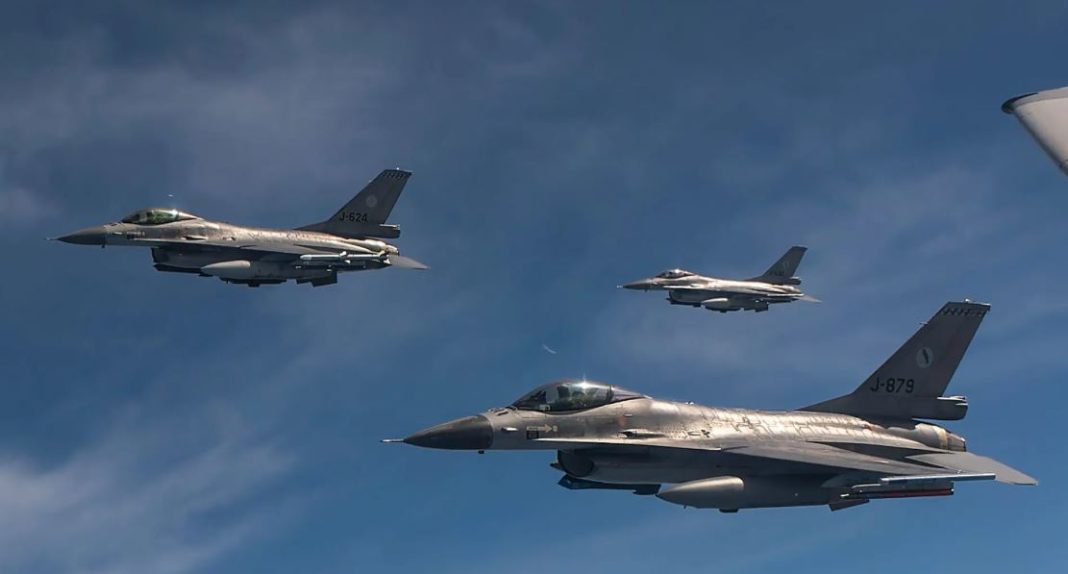A new training center in Romania stands ready, equipped with jets and awaiting Ukrainian pilots eager to learn to fly the F-16 warplane. However, despite initial expectations, the pilots have yet to arrive, shedding light on the complexities and delays surrounding NATO’s efforts to supply Ukraine with these crucial aircraft.
The training center, located at the Fetesti air base in southeast Romania, is also utilized by NATO allies for F-16 training. While Ukrainian pilots were slated to begin training there, the exact timeline remains uncertain. This delay underscores the challenges and uncertainties faced by the military alliance in expediting the delivery of F-16s to Ukraine.
Though Ukrainian pilots have undergone training in Denmark, Britain, and the United States, only a limited number are expected to be combat-ready by summer’s end. The delivery of F-16s has also lagged behind initial promises, with as few as six jets expected to be in Ukraine’s possession out of approximately 45 pledged by European allies.
Nevertheless, the arrival of these aircraft is eagerly awaited, particularly as Russia escalates its aggression in eastern Ukraine, employing airstrikes to target Ukrainian positions. Amidst dwindling ammunition supplies and political obstacles hindering additional American military aid, the F-16s offer a crucial asset, armed with missiles and bombs to counter Russian incursions.
President Volodymyr Zelensky of Ukraine has emphasized the importance of bolstering defense capabilities against Russian aggression, highlighting the imminent deployment of new fighter jets as a pivotal step forward.
However, challenges persist in ensuring the readiness of Ukrainian pilots and support personnel. Training on sophisticated Western aircraft has proven to be a complex endeavor, necessitating proficiency in the English language and familiarity with NATO standards. While progress has been made, the learning curve remains steep, particularly for pilots accustomed to Soviet-era planes and tactics.
Despite these hurdles, Danish Defense Minister Troels Lund Poulsen remains optimistic about the training progress. Yet, uncertainties remain regarding the timing and quantity of jet deliveries, as well as the capacity to maintain and support the aircraft adequately.
The logistical challenges extend beyond pilot training to include the coordination of deliveries and the deployment of support personnel. Western defense contractors may need to accompany the jets into Ukraine until sufficient Ukrainian crews are trained to maintain them, a process that could span several years.
Moreover, the condition of Ukraine’s military infrastructure poses additional obstacles, with repairs needed for aging and war-damaged runways before the F-16s can be fully operational.
While the F-16s represent a significant asset in Ukraine’s defense strategy, they are not viewed as a panacea. Former Ukrainian diplomat Yevgeniya Gaber emphasizes the importance of complementing airpower with artillery and munitions for ground warfare against Russia.
Nonetheless, the support of NATO allies like Denmark underscores the broader significance of Ukraine’s struggle for freedom and security. Minister Poulsen reaffirms Denmark’s commitment to aiding Ukraine in its defense against Russian aggression, emphasizing the interconnectedness of security interests across Europe.
while the journey to integrate F-16s into Ukraine’s defense forces has been fraught with challenges and delays, the collective efforts of NATO allies and Ukrainian leaders reflect a shared commitment to bolstering Ukraine’s security in the face of Russian aggression. As logistical hurdles are overcome and training progresses, the F-16s hold promise as a vital asset in Ukraine’s ongoing defense efforts.

